Published Aug 15, 2024
Before Home Video and Streaming, Science-Fiction Fans Worked Hard to Keep Fandom Alive
In the mid 1900s, fans kept their favorite shows alive by helping to build modern fandom.

Getty Images / StarTrek.com
When you watch something on Disney+, Netflix, or physical media, you can do so at your convenience. This is a relatively new phenomenon.
You can choose to watch something "live," but you don't have to. You don't, for example, have to make it a priority to watch a TV pilot as it premieres at 7:30 on a Thursday night; you certainly can, but you'll have other chances to watch it.
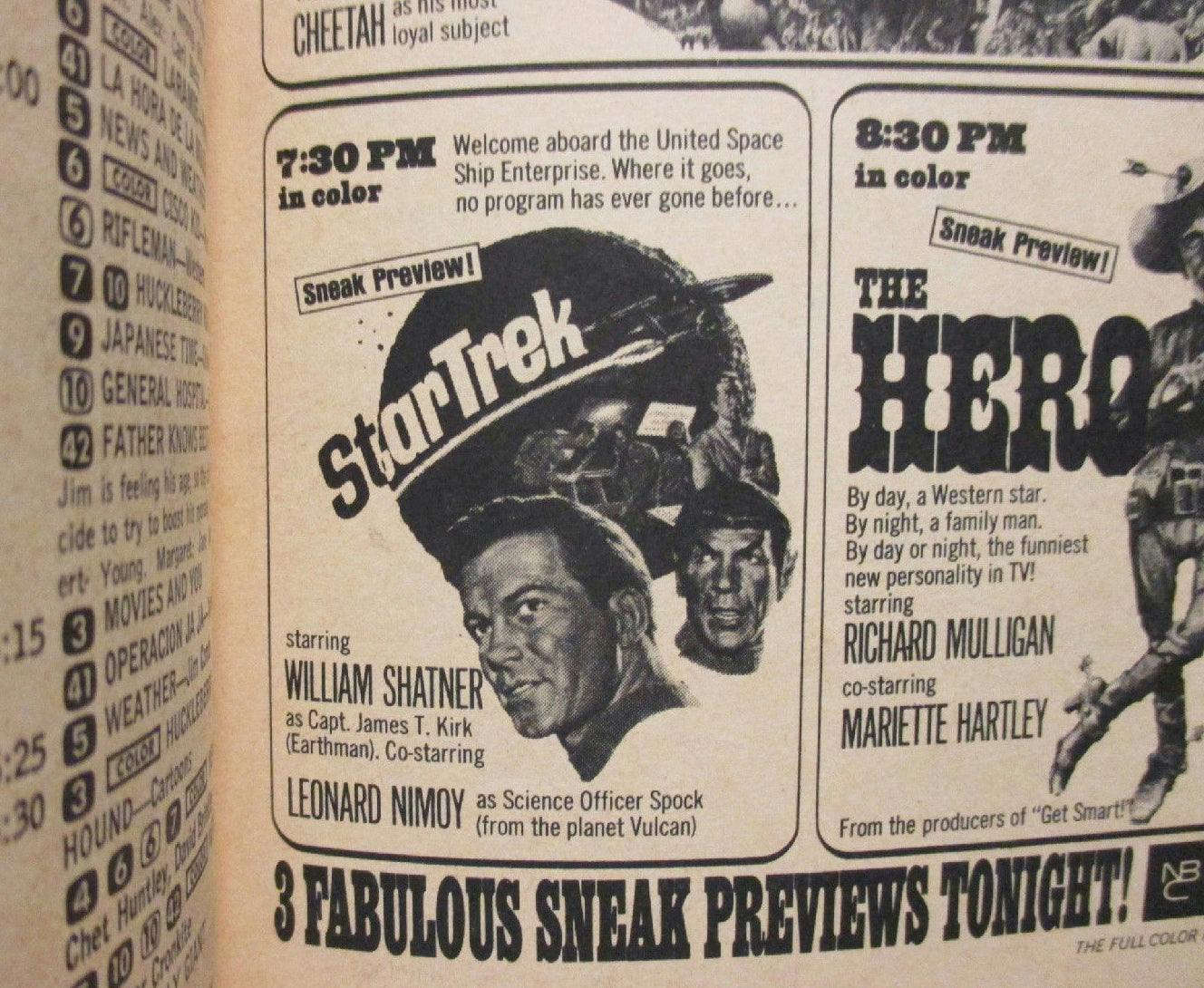
A preview for Star Trek from the September 3-9 issue of TV Guide
StarTrek.com
On September 8th, 1966, however, there was no other way to watch Star Trek. VHS and Betamax, the true originators of home video, would eventually premiere in 1970, but even then, it would take until the end of the decade before tapes, VCR recording, and time-shifting became affordable. There was simply no way to catch a TV show without the studio deciding to air it, and even then, you had to consult the TV Guide and make sure to be in front of your TV at a certain time.
Star Trek, luckily, got a chance to live again in reruns, but many shows and films never got a second chance. For a time, media lived entirely in a fan's memory. Thus, before the VHS tape, fandoms and fans had to find different ways to grow and survive.
Without the benefit of being able to import, export, share, or binge the source of their obsession, fans had to get creative. Through their creation and community, fandom became the powerful, resourceful, and innovative force it is today. And those who loved science fiction and worked to keep the memory of Star Trek alive were no exception.
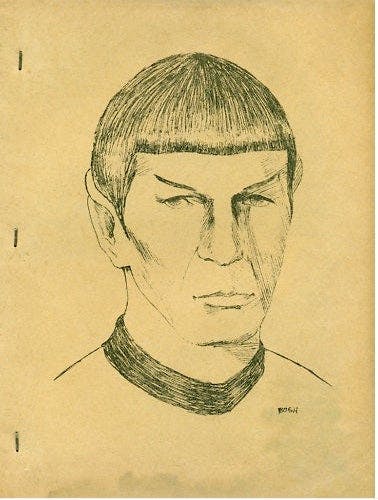
Spockanalia 1, the first Star Trek fanzine
StarTrek.com
The first fanzine (fan magazine), The Comet, premiered in 1930 and was created by the Science Correspondence Club in Chicago. First created to share club news and recent scientific developments, fanzines would grow and spread in popularity over the coming decades. Fanzines could be made cheaply with supplies that were available to many people, and they facilitated fandom moving from one-on-one conversations to a larger community. Science fiction fanzines mostly published club news, convention reports, and self-published original fiction. When Star Trek burst onto the scene, making fanzines that featured fan-fiction became very, very popular.
With increased fan interaction came fan meetups. There are a few contenders for "first fan convention," including the first Philcon in 1936, which was a meeting of nine fans at Milton A. Rothman's home. Just a few years later, the World Science Fiction Convention (Worldcon) was inaugurated in 1939 in New York City, with a much more robust 200 attendees.
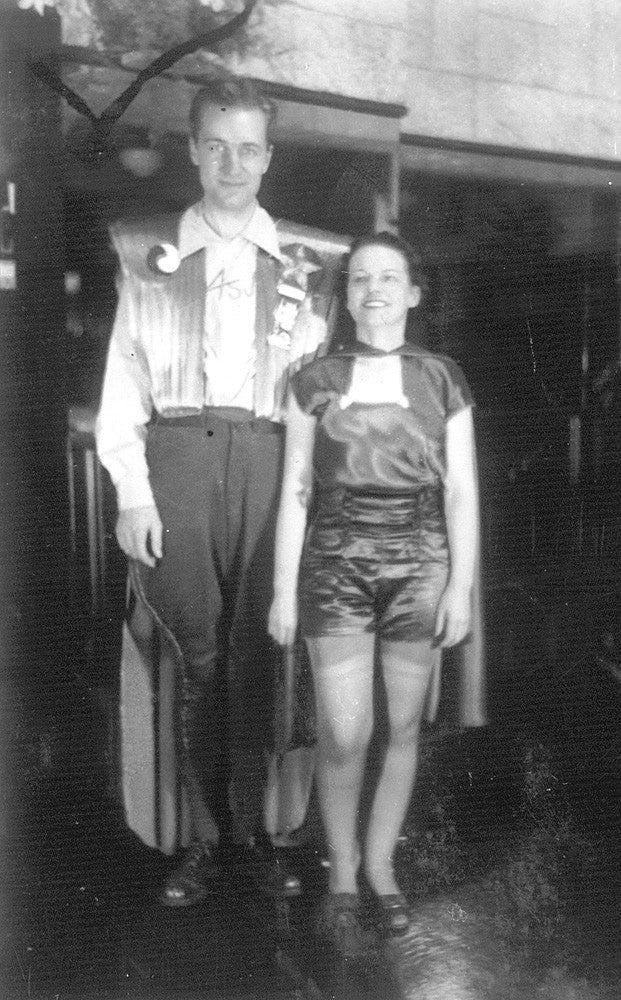
Forrest J. Ackerman and Myrtle Douglas in the world's first cosplay
StarTrek.com
At that first Worldcon, Myrtle Douglas made costumes for her and her boyfriend, Forrest J. Ackerman, to wear, inspired by science fiction magazine covers. Ackerman reported that children in the streets believed he was Flash Gordon or Buck Rogers. The next year, for the 1940 Chicago Worldcon, several dozen people showed up in costumes. Ackerman would later recall taking advantage of the fact that cosplay was so unheard of:
I got kind of a quixotic notion around eight o'clock that night, after the masquerade. I asked the 25 people in costume to come with me five blocks to the major newspaper of Chicago. They didn't know what I was up to, but we went through the streets and I went into the office of the night editor.
With a very straight face — as the editor looked up at these spacemen and vampires, wondering what all of this was about — I explained to him that we were time travelers. I said, 'You see, tomorrow we picked up your newspaper, and saw that there was a photograph of us and an interview, so naturally we had to get in our time machines and come back here to be with you tonight.'
Myrtle Douglas

The Star Trek Concordance by Bjo Trimble
StarTrek.com
As television rose in prominence, fans kept up with conventions, fanzines, and cosplay, but they sought new ways to capture and discuss a medium that couldn't be traded, collected, and couldn't be consistently seen.
Fanzines like the Star Trek Concordance by Bjo Trimble would include episode guides, with detailed notes on people and places as well as episode synopses. These reference guides helped fill fans in on things they missed and kept intricate details fresh and accurate for fans.
Reference guides would sometimes even cross international waters, with Doctor Who plot synopses coming out in fanzines years before those episodes would come to the United States. Other fans opted to preserve episodes by holding tape recorders up to their televisions as episodes aired, recording audio, if not video. Many fans would also simply take photos of their TV sets, sometimes called telesnaps; in Textual Poachers, Henry Jenkins describes the album of reference photos one Quantum Leap fan made of Scott Bakula's face.
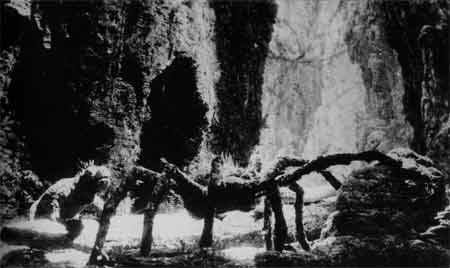
Photo still from King Kong (1933), printed in Famous Monsters of Filmland #108 (1974)
Famous Monsters of Filmland
The meticulous ways in which these fans preserved the memory of temporary things was amazing, and in some cases, entirely saved history from being lost. The format TV stations used to keep recordings, VTR, was expensive.
However, the magnetic tape could be wiped and recorded over, which happened a lot, to some near-priceless pieces of media. NASA recorded over the moon landing. The BBC recorded over hundreds of early Doctor Who episodes, including the first Dalek episodes.
But using fans' audiotapes and telesnaps, many of those Doctor Who episodes have been successfully reconstructed. Forrest J. Ackerman and other fans also worked tirelessly to preserve and rediscover history; in 1974, Ackerman was able to find photo evidence of a lost sequence from 1933's King Kong that had long been dismissed as rumor.
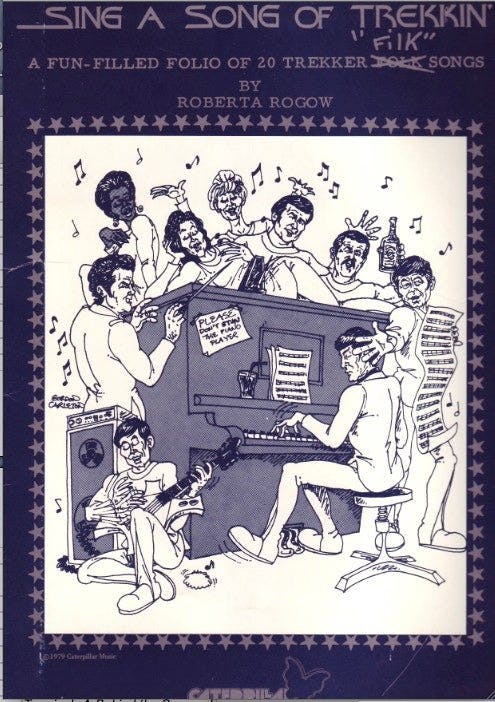
Sing A Song of Trekkin', a filk songbook by Roberta Rogow
StarTrek.com
One of the most creative ways fans celebrated fandom was through filking. 'Filk' was initially developed as science fiction folk music, but has come to be an umbrella term for folk music created by and for fans.
Filk songs were, like folk itself, designed to be communal, and enjoyed in group settings. Filk songs were often set to traditional folk tunes; "What Do You Do With a Drunken Vulcan," by Roberta Rogow, was to the tune of "What Do You Do With a Drunken Sailor."
This made them easy to perform, and to print in fanzines, sharing them with wider audiences. While filk is rarer now, conventions like Dragon Con still host filk as a subsection, and filking would help inspire future genres like wrock ('wizard rock' inspired by Harry Potter) and musicians like The Protomen, whose songs all focus on the Megaman video game series.
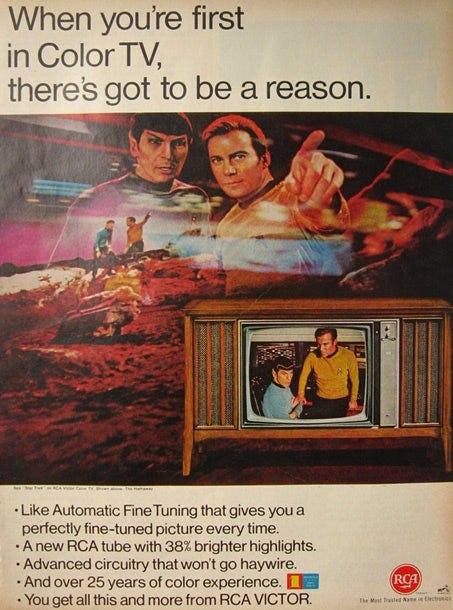
RCA Star Trek advertisement
StarTrek.com
Fans could even play with video as a creative medium without home video. In 1974, Star Trek fan Kandy Fong met her future husband, Ron Fong, who had "several shoeboxes" of outtakes and cut footage from Star Trek. Looking for something new to show at her fanclub, Kandy worked with Ron to make projector slides out of key shots and scenes, and then rearranged them to music, and to original stories she wrote.
Her first slideshow, set to "What Do You Do With a Drunken Vulcan," was a hit with the fanclub, and when she brought it to Equicon in 1976, it had to be run continuously to keep up with the crowds. Kandy's slideshows were able to create new stories out of old Star Trek simply by rearranging scenes and using narration and music to create entirely new meanings, leading to the creation of 'fanvidding' once home video was accessible.
Perhaps what best defines fandom is that it is a culture created by those without a monetary or corporate stake in the franchise. Fandom has always worked from the grassroots up, and is therefore defined by the creativity used to keep it alive and vibrant, even when facing technological and economic barriers. We see so much creativity and variety in fandom today because so many of those barriers have been removed by advancing technology. But even with barriers, early fandom was able to find a way.





